- Choose the right varieties
- Prepare your strawberry beds
- Apply winter mulch
- Protect the plants from cold winds
- Remove weeds and debris
- Water your strawberries before winter
- Monitor the weather conditions
- Consider using row covers
- Question-answer:
- When should I start winterizing my strawberry plants?
- How often should I water my strawberry plants during winter?
- Can I use plastic sheeting to cover my strawberry plants?
- How thick should the layer of mulch be around my strawberry plants?
- Can I leave my strawberry plants uncovered during winter?
- Do I need to prune my strawberry plants before winter?
- Video: Top 10 Vegetables to Grow and Harvest in Winter
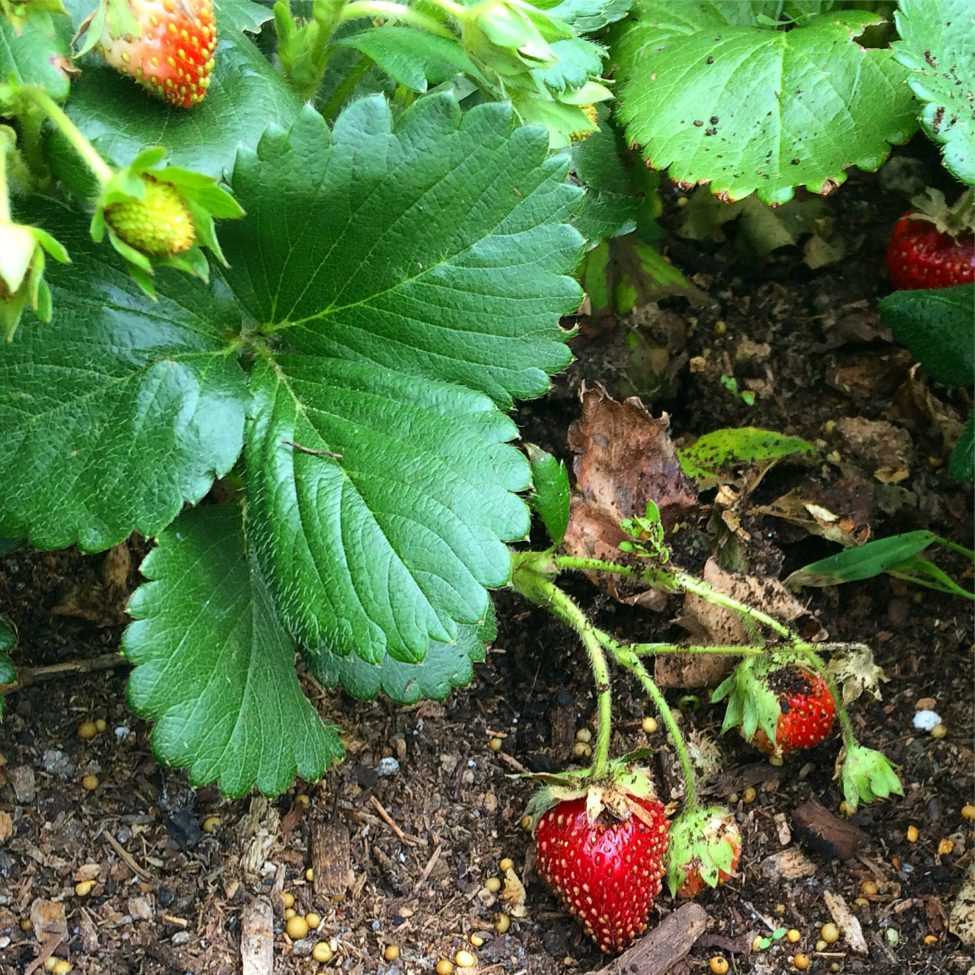
Winter can be a challenging time for strawberry plants, as the freezing temperatures can cause significant damage and even death to these delicate fruits. In order to ensure a successful wintering and protect your strawberries from freezing, it is crucial to take the necessary precautions and provide the right care.
Here are four essential tips to help you protect your strawberries from freezing:
1. Mulching: Mulching is one of the most effective ways to protect strawberry plants from freezing. By covering the soil around the plants with a layer of organic mulch, such as straw or pine needles, you can help insulate the roots and create a barrier against the cold. This will help prevent frost damage and keep the soil temperature more stable.
2. Watering: While it may seem counterintuitive, watering the soil before a freeze can actually help protect your strawberry plants. Moist soil retains heat better than dry soil, so watering before an expected freeze can help create a protective layer of insulation. However, be careful not to overwater, as excessive moisture can lead to root rot.
3. Row Covers: Another effective method to protect strawberry plants from freezing is to use row covers. These lightweight, breathable fabric covers can be placed over the plants to create a protective shield against cold winds and frost. Make sure to secure the covers tightly to prevent them from blowing away and remove them during sunny days to prevent overheating.
4. Pruning and Maintenance: It is important to prune and maintain your strawberry plants before winter sets in. Remove any dead or diseased leaves and trim back the runners to redirect the plant’s energy towards the main plant. This will help improve air circulation and reduce the risk of disease. Additionally, make sure to regularly inspect your plants for pests and treat any infestations promptly.
By following these essential tips for successful wintering, you can protect your strawberries from freezing and ensure a bountiful harvest in the coming season. Remember to stay vigilant throughout the winter months and provide the care that your plants need to thrive!
Choose the right varieties
When it comes to protecting your strawberries from freezing temperatures, choosing the right varieties is essential. Some strawberry varieties are more cold-hardy than others, meaning they can tolerate lower temperatures without being damaged. Here are some tips for choosing the right varieties for successful wintering:
- Research cold-hardiness ratings: Look for strawberry varieties that have been specifically bred for cold climates and have high cold-hardiness ratings. These ratings indicate how well the variety can withstand freezing temperatures.
- Consider day-neutral varieties: Day-neutral strawberry varieties are not as dependent on day length for fruit production. This means they have a longer growing season and can often produce fruit even during colder months. Look for day-neutral varieties that are also cold-hardy.
- Choose everbearing varieties: Everbearing strawberries produce two main crops, one in spring and another in fall. This allows for a longer growing season and increases the chances of getting a harvest before the winter frost arrives. Look for everbearing varieties that are known for their cold tolerance.
- Ask local experts: Reach out to local agricultural extension offices, nurseries, or experienced gardeners in your area to get recommendations on strawberry varieties that perform well in your specific climate. They can provide valuable insights based on their knowledge and experience.
By choosing the right strawberry varieties that are well-suited to your climate and have good cold-hardiness ratings, you can increase the chances of successful wintering and protect your strawberries from freezing temperatures.
Prepare your strawberry beds
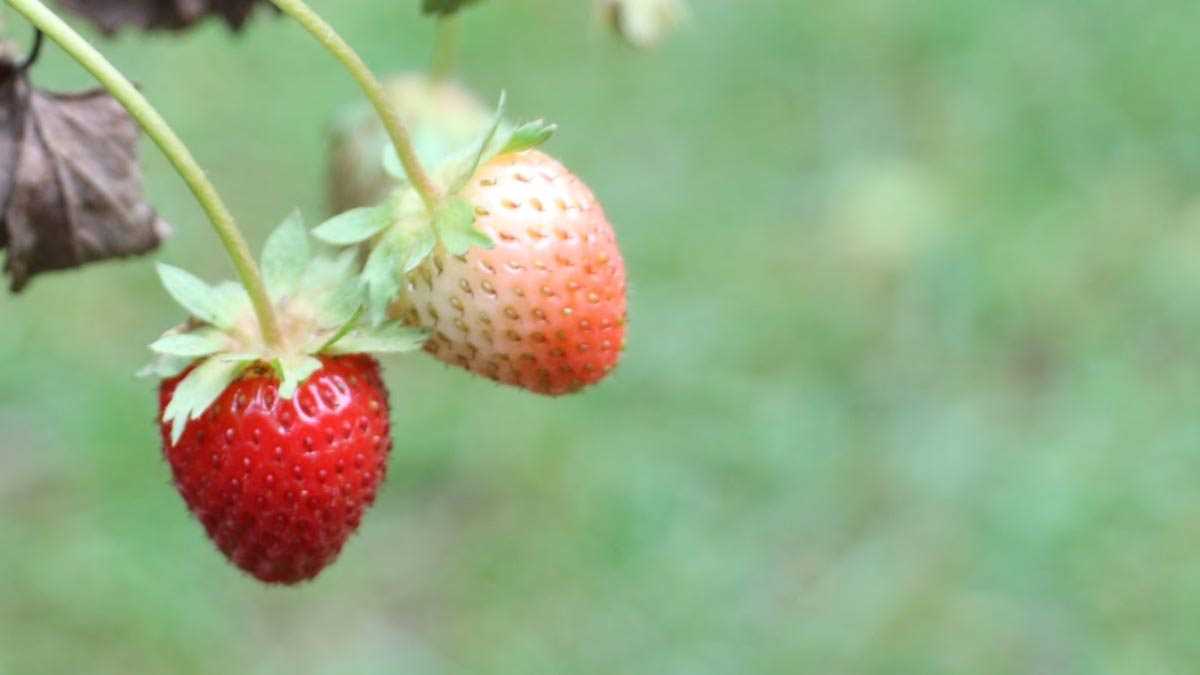

Proper preparation of your strawberry beds is essential for successful wintering. Follow these steps to ensure that your strawberry plants are well-protected throughout the colder months.
- Remove all weeds: Before winter sets in, it is important to remove any weeds or unwanted vegetation from your strawberry beds. Weeds can compete with your strawberry plants for nutrients and space, so make sure to clear them out.
- Trim and thin out plants: Take the time to trim and thin out your strawberry plants before winter. This will help promote better air circulation and prevent overcrowding, which can lead to disease and other issues.
- Cover the beds: Once your strawberry beds are prepared, cover them with a layer of mulch or straw. This will help insulate the soil and protect the plants from extreme cold temperatures. Make sure to cover the entire bed with a uniform layer of mulch.
- Protect from pests: Pests can still be a problem during winter, so consider using netting or covers to protect your strawberry beds. This will prevent birds, rodents, and other animals from feasting on your strawberry plants.
By following these steps to prepare your strawberry beds, you can ensure that your plants have the best chance of surviving the winter and producing a bountiful harvest in the spring.
Apply winter mulch
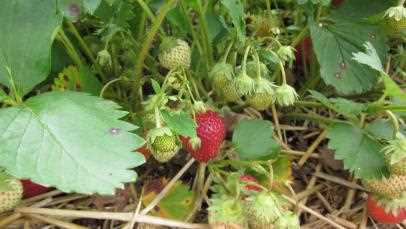

To protect your strawberries from freezing during the winter months, it is essential to apply a layer of winter mulch. Winter mulch helps to insulate the soil, regulate temperature, and prevent frost damage to the plants. Here are some tips for applying winter mulch:
- Choose the right mulch: Use organic materials such as straw, pine needles, or leaves as mulch. Avoid using materials like plastic or rubber, as they can trap moisture and cause rotting.
- Cover the beds: Spread a thick layer of mulch, about 2 to 4 inches deep, over the strawberry beds. Make sure to cover the entire surface area of the beds, including the plants and the spaces between them.
- Avoid direct contact: Do not let the mulch come in direct contact with the crown of the strawberry plants. This can lead to crown rot and other diseases. Leave a small gap between the mulch and the plants to allow for airflow.
- Renew the mulch: As the winter progresses and the mulch decomposes, it may become less effective at insulating the soil. Check the mulch periodically and add more if needed to maintain a thick layer.
Note: Applying winter mulch is particularly important for strawberry varieties that are not fully hardy and are more susceptible to winter damage. Additionally, if you live in an area with severe winters, consider using additional protective measures such as row covers or cold frames to further protect your strawberries from freezing.
Protect the plants from cold winds


When winter comes, cold winds can be a major threat to your strawberry plants. These winds can strip away the protective layer of moisture from the leaves and make the plants more vulnerable to freezing temperatures. Here are some tips to protect your plants from cold winds:
- Create a windbreak: Install a windbreak around your strawberry plants to shield them from strong gusts of wind. This can be done by placing a barrier made of burlap, plastic, or a woven material on the wind-facing side of the plants.
- Mulch the soil: Apply a layer of mulch around the base of your plants to insulate the roots from cold winds. This can help maintain a more stable temperature around the plants and reduce the risk of frost damage.
- Use netting or fabric covers: Cover your strawberry plants with netting or fabric covers to provide an extra layer of protection against cold winds. These covers can also help retain heat around the plants and prevent excessive moisture loss.
- Avoid pruning in late fall: Pruning your strawberry plants too late in the fall can make them more susceptible to cold winds. It’s best to prune them in early fall to allow the plants to develop a stronger structure before the onset of winter.
By taking these steps to protect your plants from cold winds, you can ensure they have a better chance of surviving winter and producing delicious strawberries in the next growing season.
Remove weeds and debris
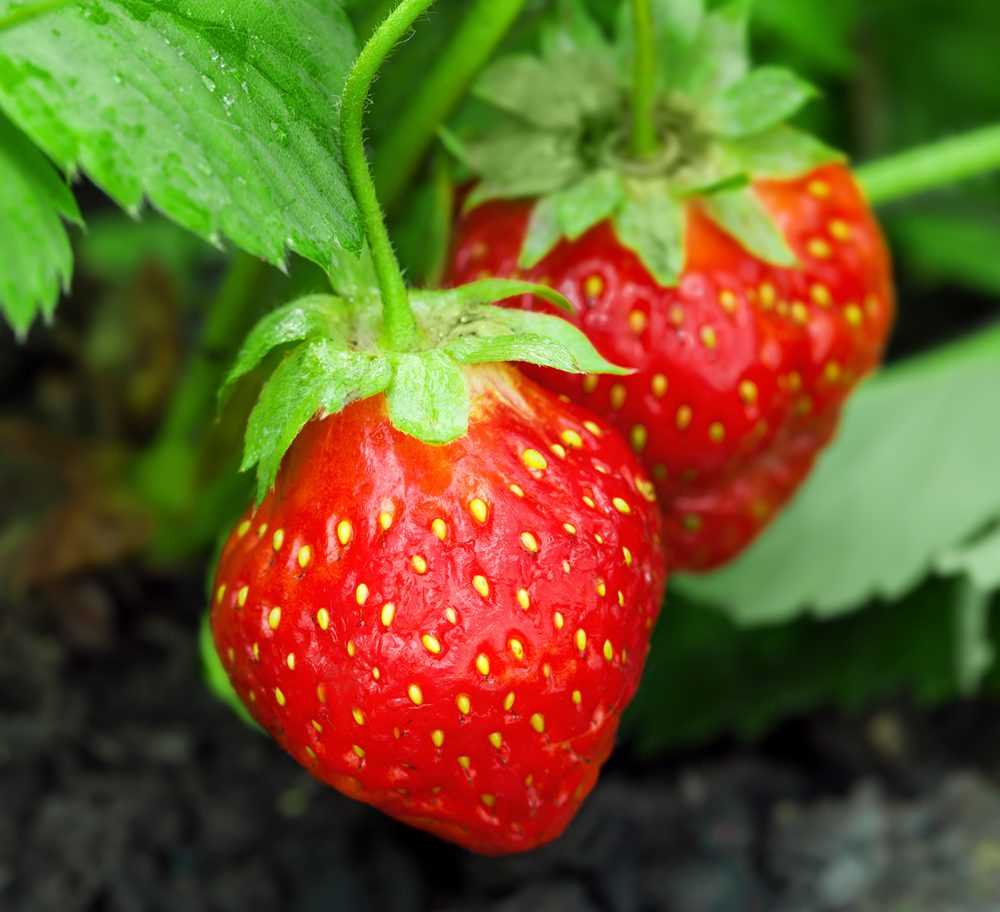

Before preparing your strawberries for winter, it’s important to remove any weeds and debris from the area. Weeds can compete with the strawberry plants for nutrients and water, and debris can create a breeding ground for pests and diseases.
Start by pulling up any visible weeds by hand, making sure to remove the entire root system. Be careful not to disturb the strawberry plants while doing so. For smaller weeds or hard-to-reach areas, you can use a small hand tool or a hoe to remove them.
Next, remove any fallen leaves or dead plant material from the strawberry bed. These can attract pests and diseases, and also prevent proper air circulation around the plants. Rake up the debris and dispose of it properly, either by adding it to your compost pile or disposing of it in your local green waste facility.
Regularly maintaining a weed-free and debris-free strawberry bed will help promote healthy plant growth and reduce the risk of pests and diseases. It’s a simple but essential step in protecting your strawberries from freezing during the winter months.
Water your strawberries before winter
Proper watering of your strawberry plants before winter is essential for their survival and can help protect them from freezing temperatures. Here are a few important tips to keep in mind:
- Water deeply: Before the first frost, make sure to water your strawberry plants deeply. This will help the plants establish a healthy root system and store enough water to withstand the cold winter months.
- Avoid overwatering: While it’s important to water your strawberries before winter, be careful not to overwater them. Excess moisture can lead to rot and other fungal diseases. Make sure the soil has good drainage to prevent waterlogged conditions.
- Choose the right time: Water your strawberries a few days before the first expected frost. This will allow the plants enough time to absorb the water and prepare for winter.
- Protect the crowns: When watering your strawberries, focus on the soil around the crowns of the plants. This will ensure that the roots absorb water directly and prevent the crowns from getting too wet, which can lead to crown rot.
By following these tips and providing adequate moisture to your strawberry plants before winter, you can help them survive freezing temperatures and ensure a healthy crop in the following growing season.
Monitor the weather conditions


Monitoring the weather conditions is crucial for successfully protecting your strawberries from freezing during winter. By staying informed about the weather forecast, you can take proactive measures to prevent damage to your plants.
Here are some tips for monitoring the weather:
- Check the local weather forecast: Keep an eye on the weather forecast for your specific location. Look for any potential frost warnings or extremely cold temperatures that could harm your strawberries.
- Use weather apps or websites: Use weather apps or websites that provide reliable and up-to-date information. These platforms often offer detailed hourly forecasts, so you can stay informed about any sudden temperature drops.
- Install a weather station: Consider installing a weather station in your garden. This will enable you to track real-time weather data, including temperature, humidity, and wind speed. Some advanced weather stations even send alerts to your smartphone when specific conditions are detected.
By monitoring the weather conditions closely, you can plan ahead and take necessary steps to protect your strawberries from freezing during winter.
Consider using row covers
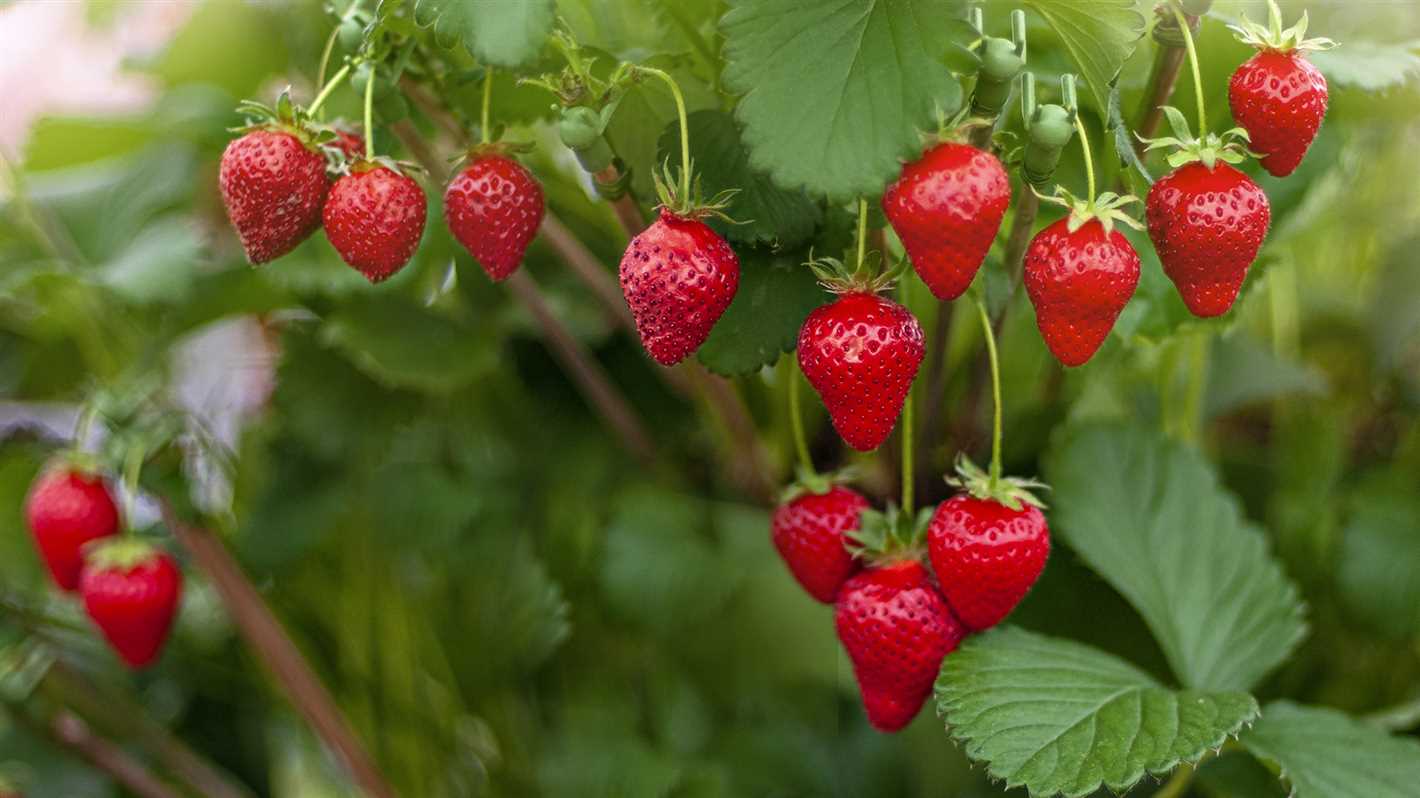

One effective way to protect your strawberries from freezing temperatures is by using row covers. Row covers are lightweight, breathable fabric sheets that are placed directly over the plants to provide insulation.
When using row covers, it is important to choose the right type of fabric. Look for covers that are made from materials such as spunbond polypropylene or floating row covers, as they are designed to trap heat and protect plants from cold temperatures.
Row covers can be placed directly over the strawberry plants, creating a barrier between the plants and the freezing temperatures. This helps to retain heat and prevent frost from damaging the plants.
It is recommended to secure the row covers firmly in place to ensure that they do not get blown away by strong winds. You can use stakes or heavy objects to anchor the covers to the ground.
One advantage of using row covers is that they can also protect your strawberries from pests and insects. The covers act as a physical barrier, preventing pests from reaching the plants.
However, it is important to remove the row covers during the day or when the weather is warmer to allow for air circulation and prevent overheating. Overheating can lead to moisture buildup and increase the risk of diseases.
Overall, using row covers is an effective method to protect your strawberries from freezing temperatures. They provide insulation and also serve as a barrier against pests, helping your plants to survive the winter season.
Question-answer:
When should I start winterizing my strawberry plants?
You should start winterizing your strawberry plants when temperatures start to consistently drop below freezing, usually in late fall or early winter. It is important to give your strawberry plants enough time to prepare for the cold temperatures in order to survive the winter.
How often should I water my strawberry plants during winter?
You should water your strawberry plants during winter whenever the soil begins to dry out. While the plants are not actively growing during this time, they can still become dehydrated if they don’t receive enough moisture. Check the soil regularly and water as needed to keep it slightly moist but not saturated.
Can I use plastic sheeting to cover my strawberry plants?
Plastic sheeting is not recommended for covering strawberry plants during the winter. Plastic does not allow for proper air circulation, which can lead to excess moisture and fungal growth. It also does not provide good insulation against cold temperatures. It is best to use frost blankets or row covers made of breathable material that can trap heat while still allowing air to circulate.
How thick should the layer of mulch be around my strawberry plants?
The layer of mulch around your strawberry plants should be around 2-3 inches thick. This will provide enough insulation to protect the roots from freezing temperatures. Make sure to spread the mulch evenly around the base of the plants, leaving a small space around the crown to prevent rotting.
Can I leave my strawberry plants uncovered during winter?
It is not recommended to leave your strawberry plants uncovered during winter, especially in regions with freezing temperatures. Without any protection, the plants are more likely to suffer from frost damage or even die. It is best to use frost blankets or row covers to create a barrier between the plants and the cold air.
Do I need to prune my strawberry plants before winter?
Pruning your strawberry plants before winter is not necessary. It is actually recommended to leave the foliage intact as it provides some additional protection to the plants. Once winter is over and the threat of frost has passed, you can remove any dead or damaged foliage to encourage new growth.







